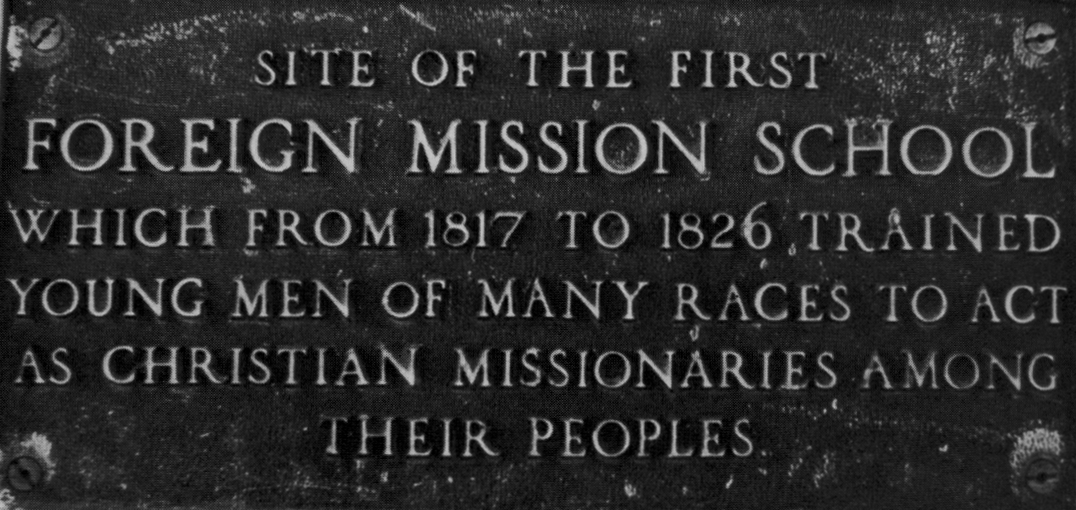Faced with declining revenues for its global missions, ABCFM founded the Foreign Mission School in Cornwall, Connecticut, in 1816 as a way to proselytize at home and to boost donations. 1 This boarding school aimed to educate non-Christian boys to become missionaries in their homelands. Three ABCFM trustees penned a letter articulating the case for the school, stating: “We feel confident that this thing is from God … [and] will, among others, be a means of evangelizing the world.” 2 In 1817, the school opened its doors to 12 students, including seven Hawaiians, Henry ʻŌpūkahaʻia (Panel 4) among them. Four others — George Prince Tamoree aka Humehume, Thomas Hopu, John Honoli‘i and William Kanui — would join the missionaries’ first journey to Hawai‘i as “native teachers” and “assistants.”
Edwin Dwight, the school’s founding principal and a relative of Yale President Timothy Dwight, had tutored ʻŌpūkahaʻia in New Haven. He developed a rigorous curriculum that encompassed English, Latin, Greek, history, geometry and trigonometry, surveying, astronomy and theology. Students also learned practical trades such as blacksmithing, and performed agricultural and manual tasks around the school, in keeping with the Protestant ethic of industriousness.
In succeeding years, the school’s attendees grew to include Abenaki, Bengali, Cherokee, Choctaw, Chinese, Hawaiian, Hindu, Malay and Marquesan students. No other school in America had attempted to educate such a diverse student body, which collectively spoke 21 different languages. Conflicts inevitably arose. In the mid-1820s, two Cherokee alumni married white women from Cornwall, sparking outrage in the town and across the state. The incidents exposed deep-seated racial attitudes that challenged the church’s espoused belief in equality for all. The controversy turned public opinion against the school, which closed in 1826, just nine years after opening.

Aim of the Foreign Mission School
The education in our country of Heathen Youth, in such manner, as, with subsequent professional instruction will qualify them to become useful Missionaries, Physicians, Surgeons, School Masters, or interpreters and to communicate to the Heathen Nations such knowledge in agriculture and the arts, as may prove the means of promoting Christianity and civilization.4
The contradiction between the school’s stated feelings toward these ‘heathen’ youths and the reality of the reactions to these marriages demonstrated the racism, paternalism, and inequality that permeated both society and the missionary movement.
— The Cornwall Historical Society 3

2The Cornwall Historical Society, exhibit on the Foreign Mission School, 2010, http://www.cornwallhistoricalsociety.org/exhibits/poster-fmission.html.
3Ibid.
4As referenced in the “Report of the American Board of Commissioners for Foreign Missions: 1810–1819.”



